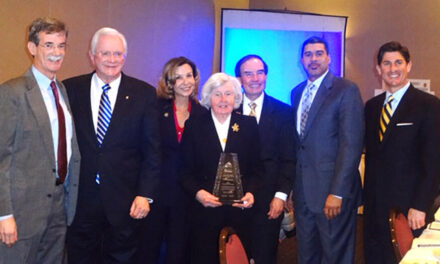Over the last 5 years, our industry has grown 23%.

Dr. Anirban Basu, the popular host of WYPR-FM’s “Morning Economic Report,” and the chairman and CEO of Sage Policy Group, released an economic impact study of the Maryland horse industry illustrating that, in 2015, it generated $1.15 billion in economic activity, a gain of 23 percent over the $930 million it generated in 2010.
Like a exotic Santa bearing gifts for all just in time for the holiday season, Dr. Anirban Basu, the popular host of WYPR-FM’s “Morning Economic Report,” and the chairman and CEO of Sage Policy Group, released an economic impact study of the Maryland horse industry illustrating that, in 2015, it generated $1.15 billion in economic activity, a gain of 23 percent over the $930 million it generated in 2010. The report was picked up by regional and national media outlets, thus yielding even more Christmas gifts in the form of positive press – 30 at last count, and growing (you can see for yourself by googling any of the key words associated with the study, and include the words “news” and “2016”).
Methodology
The study was funded by the Maryland Horse Council, Maryland Horse Industry Board, Maryland Association for Wildlife Conservation, Maryland Jockey Club, Maryland Million, Ltd., Maryland Standardbred Breeders Association, Maryland State Fair, Maryland Steeplechase Association, Maryland Horse Breeders Association, Cloverleaf Standardbred Owner’s Association, Fasig-Tipton Mid-Atlantic, Maryland Thoroughbred Horsemen’s Association and Ocean Downs Racetrack.
The Sage Policy group sent surveys to more than 1,000 stakeholders to collect hard, operational statistics to drive the analysis. Much to everyone’s surprise, nearly 700 surveys were completed by stakeholders from every county in Maryland, a statistically unheard of percentage of participation, resulting in very reliable results.
Economic impacts were calculated using a professional economic analysis modeling software called IMPLAN, which incorporates contemporary purchasing coefficients and other data pertaining specifically to Maryland’s economy.
To read the complete Sage Policy Group report, plus an explanation of its methodology (including IMPAC), click here: MD Horse Industry 2016 Economic Impact Report. The report also includes the original survey questionnaire.
Report Highlights
Highlights of the study illustrate that in 2015:
- The Maryland horse industry supported approximately 5,800 full-time jobs across Maryland, and 9,100 jobs if including indirect “full-time equivalent” positions;
- the Maryland horse industry spendt $481.8 million in wage and salary income;
- the Maryland horse industry generated $1.15 billion in sales;
- overall spending in the horse industry exceeded $660 million;
- spending on equipment, personnel and physical structures has been and is currently on the rise.
The survey estimates that if the current pace of industry expansion continues through 2020, the industry will have a $1.5 billion yearly economic impact on Maryland and would support more than 11,000 jobs with $620 million in employment costs, resulting in $68 million in state and local tax revenue.
What makes this even more fascinating is that the study does not include the economic impact of the racetracks; the Preakness alone generates more than $30 million in statewide economic impact each year. This study, however, focused on horse farms and support industries, encompassing racing, sport and pleasure horses.
Regardless, many are giving the credit for this upswing to the increase in purse amounts for the harness and flat tracks; the increase in the purse amounts is the windfall that comes with the legalization of slots.
State leaders were quick to take the opportunity to comment on the good news.
“Horses are a critical component of Maryland’s agricultural industry. The continued success of Maryland’s horse industry is an important part of growing our economy and creating jobs for more Marylanders, and it’s helping to preserve our farmland and open spaces as well,” said Governor Larry Hogan.
“I’m so pleased to see Maryland’s horse industry making such a comeback after some challenging years. The horse industry is a major contributor to Maryland’s agricultural economy through hay and bedding suppliers, feed stores and grain growers, and a multitude of small businesses that service the industry,” said the Secretary of Agriculture, Joe Bartenfelder.
The Real Result of the Study
The real result of the study is that the Maryland horse industry is getting a tremendous amount of play in the mainstream media. And that is a true Christmas present for our community.










